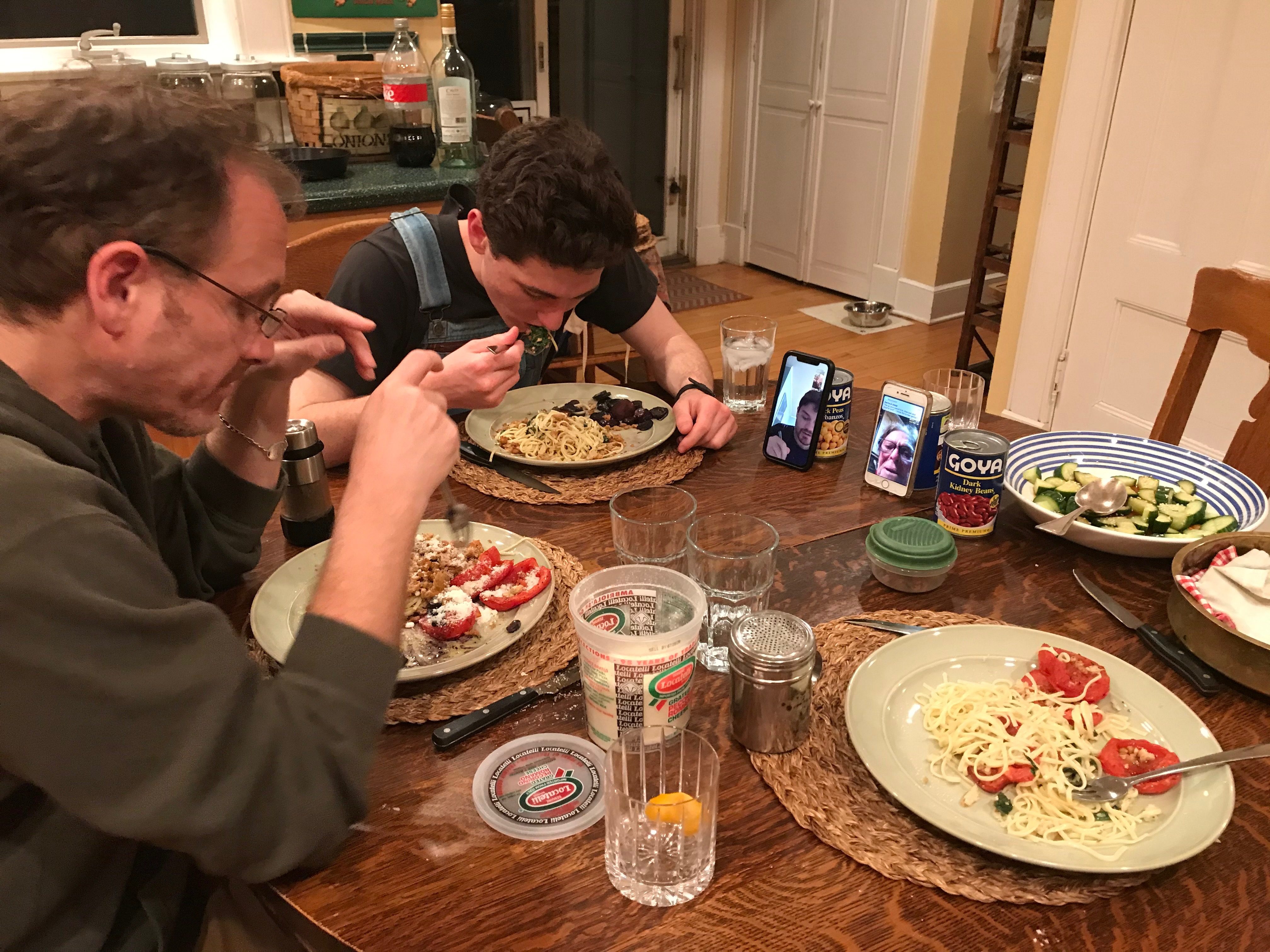
Lynne Curry
Without the foundational structure of schooling, our nightly meal is the only constant in these children’s lives.
The Saturday after Oregon’s governor, Kate Brown announced that public schools were closing until April 1, an exchange student from Germany moved in with our family of four. It had nothing to do with coronavirus.
Emma’s previous host parents were about to have their fifth child and housing a 16-year-old suddenly became too much. That weekend, we let Emma settle in, went out for pizza, took her skiing and shared meals around the table. An ordinary American family life in a small town.
I grew up in a big family where eating dinner together was our nightly ritual. My mother set the table with placemats and cloth napkins. On Sundays, there was china and silver and lit candles. The kids got thimble-size pours of wine. My own style as a working mom is less formal, and our two daughters set the table. But dinnertime remains an essential point of connection, just as the research on family mealtime attests. Often, it’s the only one in our activity-driven days.
Each meal, Emma reported on Covid-19 cases in her village in northern Germany.
Emma integrated readily into the routine—from table setting to clean up—with our 14-year old and 11-year old daughters. She taught us German for lentil soup and bread (cringing at our pronunciations), and we shared sheet pan nachos, mac and cheese, cauliflower curry and roast chicken. My American teenager was shocked to learn that Emma won’t get her driver’s license until she turns 18, but she has legally enjoyed beer and wine with her parents since she was 14.
Each meal, Emma reported on Covid-19 cases in her village in northern Germany. So far, her Rotary exchange program has not called her home, and her return flight is scheduled for July 3rd. I don’t try to predict what air travel will be like in that unforeseeable future.
On Tuesday, March 17, the governor extended the school closures, which are now in effect for the rest of the academic year—and my husband, two daughters, and I became Emma’s full-time companions. As social distancing recommendations turned to stay-at-home orders, dinnertime took on more meaning.

Lynne Curry
The author’s two children pose at a local sheep farm with Emma (red sweatshirt), the German exchange student who temporarily shares their house
Over bowls of chili and cornbread one evening, I asked Emma, “What do you want to learn in the U.S.?” She said, “I want to have an ordinary American high school experience.” She talked about missing out on the prom, spring track meets and graduation. “I miss school,” she said, and our girls nodded their heads.
Without the foundational structure of schooling, our nightly meal is the only constant in these children’s lives. With my husband and I still working full time, they make their own daily schedules. Only dinner is mandatory. The dining table where we set out plates and forks and food is also their curriculum—for language learning, world news, political commentary, activity reports (i.e. accountability), comic relief and reality checks.
As we enjoy homemade panini and tortilla española, we explain why they cannot go to the playground or visit friends. We tell them that Oregon is not Germany, where the virus is well in hand. We remind them that our rural region and its population of 7,000 may be somewhat insulated, but only for now. Then, together, we bow our heads and we eat.









